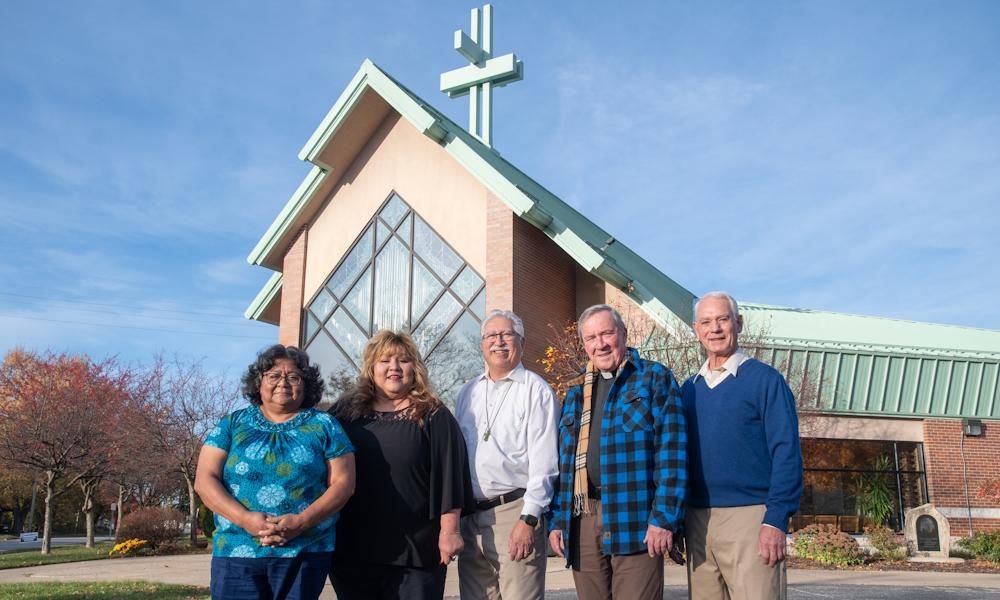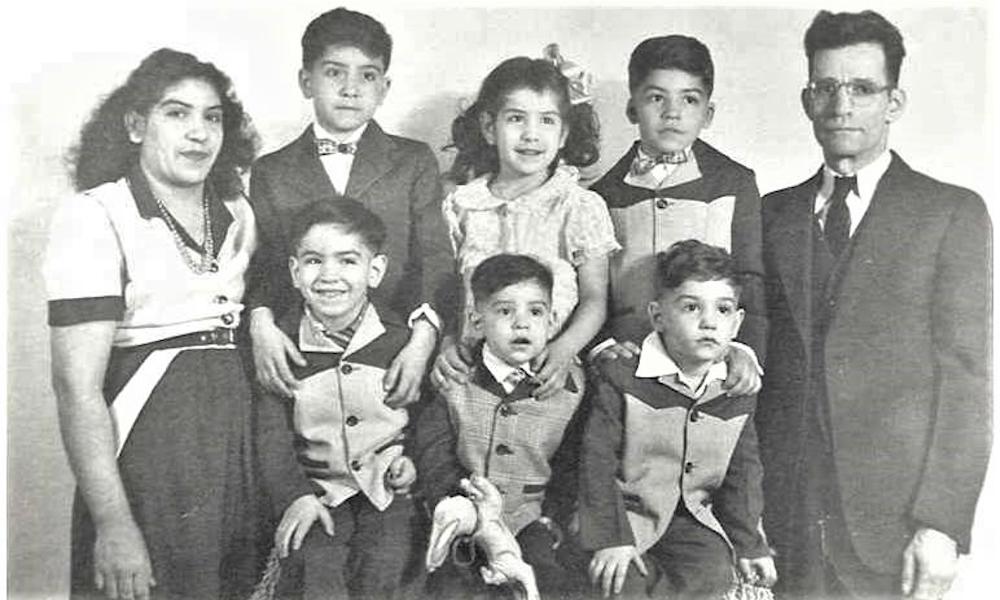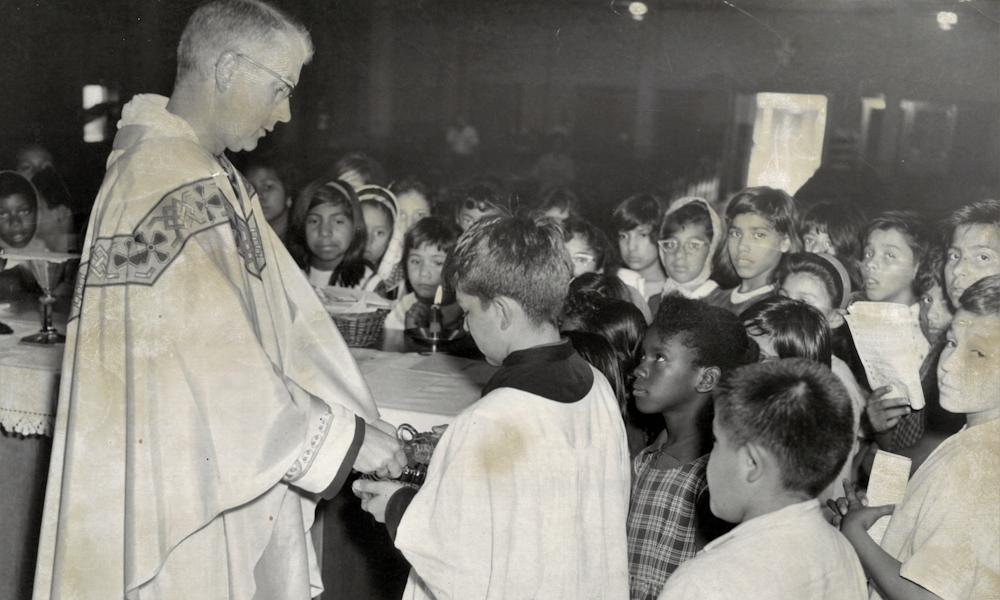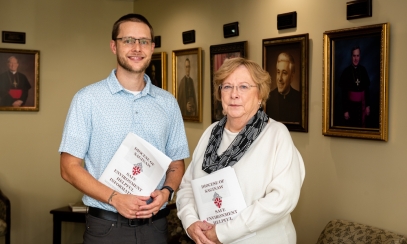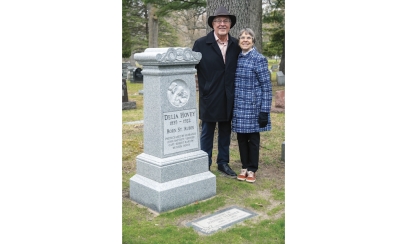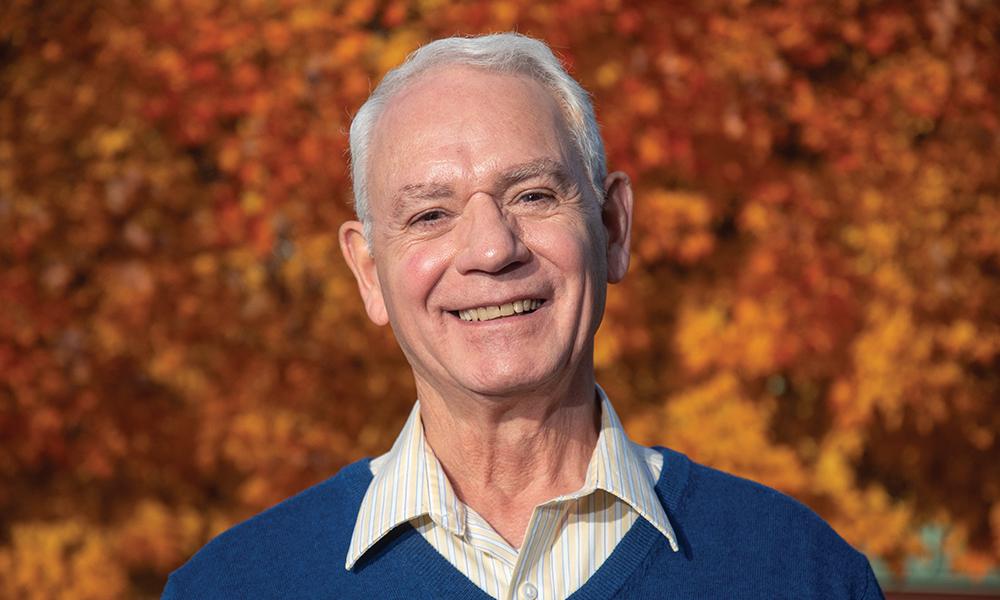
The gift of a written history
St. Joseph Parish prepares to celebrate 150 years; former parishioner completes decades of research
St. Joseph Parish prepares to celebrate 150 years; former parishioner completes decades of research
Gerardo (Jerry) C. Gonzalez wanted to learn more about the history of St. Joseph Parish on Saginaw’s East Side. It’s the faith community he called home. He was baptized, made his first Holy Communion and was confirmed there. He graduated from the parish’s high school in 1967 and received an outstanding education from the Dominican sisters who taught there.
Gerardo (Jerry) C. Gonzalez wanted to learn more about the history of St. Joseph Parish on Saginaw’s East Side. It’s the faith community he called home. He was baptized, made his first Holy Communion and was confirmed there. He graduated from the parish’s high school in 1967 and received an outstanding education from the Dominican sisters who taught there.
In the 1990s, three decades after graduating, Jerry, a retired mechanical engineer, found himself back at the parish his parents raised him in, this time looking for answers.
“I wanted to know more.”
Jerry’s father was born in Mexico and traveled across the country working on railroads before coming to Saginaw and taking a job in the foundry pouring iron. The foundry was located near St. Joseph Parish, which would come to be known as the “Rainbow Church” for its diverse parish community.
The parish didn’t become that way overnight, however.
“At that time, pew fees were the norm,” Jerry said. “Blacks and Mexicans couldn’t sit in the pews because they were owned by the person whose number was there.”
As a result, Black and Hispanic Catholics who attended St. Joseph stood in the back or sat in the balcony, a practice that changed under Monsignor Harold Bolton, who served as the parish’s pastor from 1944 to 1955.
“Monsignor Bolton said it was ‘un-Christian’ and he canceled pew fees,” Jerry said he learned while doing his research.
The move was significant and ahead of the Civil Rights Movement. Jerry said it helped create an environment of welcome in the parish, an environment he believes continues to this day.
“The area around Sixth Avenue and Washington was known as ‘Mexican town.’ There was a Mexican theater, a restaurant that my dad owned, a barber shop and a bar. St Joe’s had the largest population of Hispanics,” he said.
Jerry said Monsignor Bolton was interested in not only the spiritual lives of those in the area, but their physical health as well.
When Monsignor Bolton learned that the infant mortality rate in the Hispanic community was more than four times the average in Saginaw County, he was “appalled,” according to Jerry. To address the issue, he enlisted the help of the League of Catholic Women. The Guadalupe Clinic was established on the parish grounds in 1945. The clinic worked to improve prenatal and postnatal care, as well as birthing care for those living in camps and cramped living conditions while often on the move. The Guadalupe Clinic’s staff delivered more than 500 babies.
Recognizing the need for a permanent staff at the clinic, Monsignor Bolton invited the Mission Sisters of the Holy Spirit to minister in the parish the following year. Three buildings:— Faith, Hope and Charity— were established to meet the growing medical, social and religious needs of the community. The Hope building was a medical clinic operated by two of the Mission Sisters who were registered nurses and supported by a volunteer doctor. The Faith building served as the convent for the sisters. Food and clothing were distributed from the Charity building.
Jerry enjoyed growing up in the parish, which ministered to people beyond the parish walls, and he was grateful to attend the parish school.
“It was welcoming,” he said.
A parish home for laborers
While Jerry joined his wife Helen’s parish, St. Francis de Sales in Bridgeport, after they married, he was still interested in his childhood parish’s story. As Jerry learned more about the roots of his faith, he began to write the St. Joseph Parish history. It was a journey that took him 20 years to complete, as he cared for Helen, who sadly lost a 15-year battle with Parkinson's disease in 2020.
Jerry found that, although St. Joseph is home to many Hispanic and Black Catholics, it was more than 90 percent Irish when the parish was founded in 1873. Many Irish immigrants settled in the area and worked on the Flint and Pere Marquette Railroad Station, commonly known as the Potter Street Station.
The parish’s legacy as a spiritual home for those leaving their home behind to find work continued, from migrant workers harvesting sugar beets to foundry labor. Jerry’s father, like many others, worked at the General Motors Corporation’s Grey Iron foundry.
Jerry also learned that Black men from the South were recruited to work at the foundry during the summer months. They lived in tents on the company’s property and poured hot iron during hot days.
The plant, which melted 200 tons of iron each day, was transferred to Chevrolet. Some workers from the South decided to stay and became members of the nearby St. Joseph Parish.
Fabric of faith
Josie Salazar, who teaches faith formation at St. Joseph, also shares a long history at the parish. She said her grandfather also came to the area to work in the foundry. Her family has been part of the parish community for generations. She loved recently watching her grandson receive his first Holy Communion in the same church she did. It brings her joy when those who have moved away come “home” for Mass on a Sunday. And, she said, the parish is also a strong connection to loved ones who passed on the faith.
“It's just beautiful,” Josie said. “I love coming to the (Our Lady of Guadalupe) Novena because it reminds me of my grandma. The music reminds me, and I sense her,” she said.
Father Frank Voris, O.F.M. Cap., who has served as the parish’s pastor since 2009, said he has been using the image of fabric to help parishioners reflect on the upcoming 150th anniversary celebration.
“I ask them to think about these 150 years as a fabric of faith,” Father Frank said. “Think about all the people in this parish who have shared the faith over the years, who have brought you back home to this church or kept you steady in your faith. They are all part of the fabric— and we are, too.”
Appreciation for the past
By researching and writing the history, Jerry hopes to preserve the stories of those who have been part of the fabric of the St. Joseph Parish faith community for future generations.
"What I hope will come out of this is that it informs people about the history; there is so much history here,” Jerry said. “The descendants of St. Joe's … and the outreach of this parish to other parishes and throughout the nation is incredible.”
The parish continues to be a source of welcome for all; Father Frank said it is woven into the fabric of their faith.
“My life has been very touched by the people here in unique ways,” he said. “The people here are very special.”
During this year leading up to the anniversary, Jerry has been offering monthly presentations to share what he has learned about the history of the parish and the people. He hopes to one day offer everything in a single book or series of booklets. In the meantime, he is grateful his research has given him a deeper appreciation for the parish he was raised in, and he hopes others will experience that, too.
St. Joseph Parish 150th Anniversary Celebration
Thursday, Sept 7: Anniversary Mass
Friday, Sept. 8: Welcoming event in parish hall
Saturday, Sept. 9: Dinner banquet at Horizons
Sunday, Sept. 10: Mass with Bishop Robert Gruss

